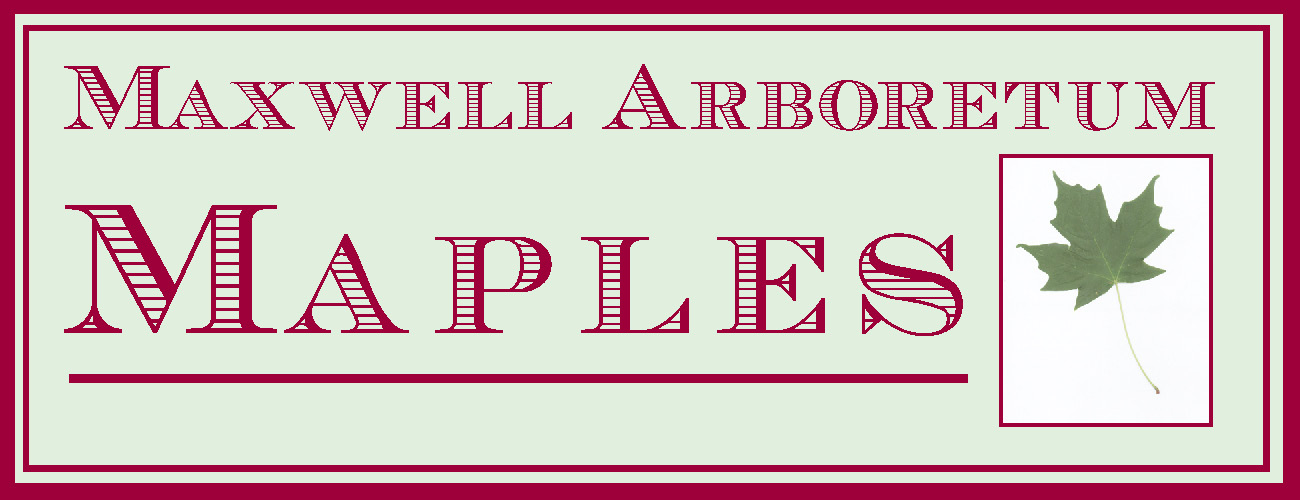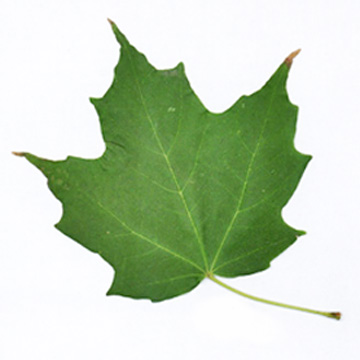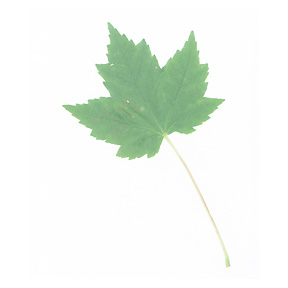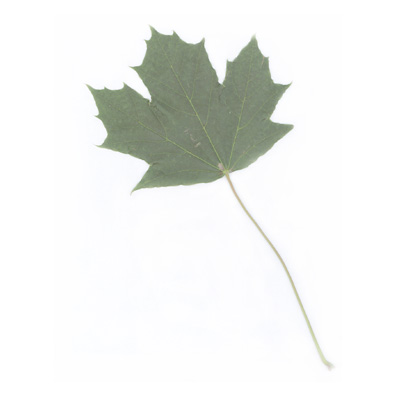
About | Map | Inventory | Plant Information | Documents | Resources
Scans of leaves of Maples in Maxwell Arboretum
[Not to scale]

Acer saccharum
Sugar Maple
If you were to ask most anyone who, like me, grew up in southeast Nebraska in the late 1950s and early 60s, to name three "kinds"of trees, maple would surely be among those they list. Maples hold a place in the popular imagination for a number of reasons: their spectacular fall color, their whirly-gig seeds, and, of course, maple syrup and maples occupy a special place in our tree loving hearts because these three things connect us to our childhoods.
If one is of a certain age and from a certain place, you walked to school in the fall kicking mountains of maple leaves and when you arrived at your classroom your teacher had maple leaves–real or cut from the ubiquitous elementary school "construction paper"–thumb-tacked to the bulletin board. Then, in the mid-sixties we were inundated with information about Canada's independence and its new maple leaf flag. Back in those days, we still ate a lot of real food and when winter set in we sat down to plates of home made waffles and pancakes drenched in what we called maple syrup, whether or not it came from actual maple trees or just the Log Cabin bottle.* And in the glorious returning spring, thousands of Silver Maple seeds helicoptered through the air and into our waiting grasping hands.
David Lentink, Caltech

Acer rubrum "Autumn Flame'
Red Maple
Until very recently, maples were classified as members of the Aceraceae family. However one feels about it–and there is some debate–the molecular botanists have been busy reclassifying all sorts of genera, including maples. A few years ago, maples were moved to the Sapindaceae or Soapberry family, a group of plants which includes species of economically valuable tropical fruit, including the lychee, longan, pitomba, korlan, rambutan, mamoncillo and ackee. Seems a little odd, doesn't it? So much so, that many botanists and horticulturists are continuing the long held nomenclature of Aceraceae.
However you classify them, maples are a large complicated genus housing at least 150 species in various sections and series. Taxonomists are still struggling with maple species classification. Although mostly a tree of the world's temperate regions, maple distribution crosses the equator in Asia.

Acer rubrum "Autumn Flame'
Red Maple
Maples can be small and fine textured–as in the Japanese Maple, or massive and solid like our mature sugar maples. They can be exotic (to us) like Acer triflorum from Manchuria or familiar like our common Boxelder. Maxwell Arboretum houses specimens of all these and more. Maples fill many needs in our landscape and give us year round interest. So don't wait till fall to come see them. In late winter you can watch maple tree buds swelling and soon new red twig growth and flowers will appear.
On this site you can download maps and information on all of Maxwell's maples as well as find resources to learn more and read documents and articles on the arboretum's species and cultivars.
* In his recent book about trees, Colin Tudge, that wonderful British biology writer, chides us, "Of the many routes to obesity on offer in the United States, that of crisp bacon, a stack of buckwheat pancakes, and maple syrup is perhaps the most seductive of all." The Tree: A Natural History of What Trees Are, How They Live, and Why They Matter, 224

Acer platanoides
Norway Maple
This is an image of the Norway Maple leaves that were found in a birch bark container carried by Ötzi, the Iceman discovered in 1991 in the Tyrolian Alps. He used them, freshly picked, to insulate the fire starting embers that he carried with him. They are over 5,000 years old.